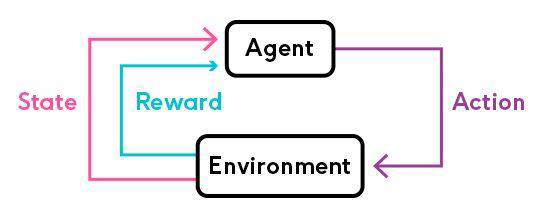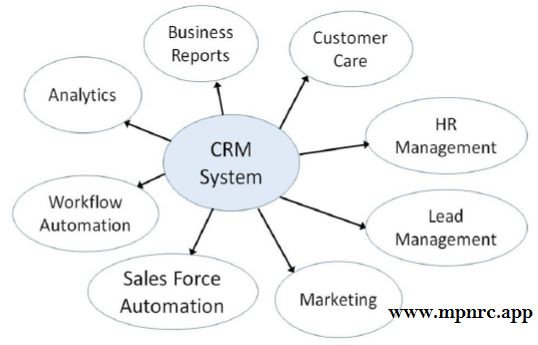
AI is the technology that automates repetitive learning and data discovery. It can perform frequent high-volume computerized tasks reliably and without human fatigue. However, humans are still required to set up and program AI. It can also be used to add intelligence to existing products, such as Siri which Apple just added to their new iPhones. The combination of automation and large amounts of data can improve a variety of technologies, from smart cams to security intelligence.
AI
AI, which is an innovative technology that automates tasks using large amounts of data, is a revolutionary technology. There are many AI tools out there that can be used to improve business decision making. However, businesses often lack the necessary skills and talent to create these solutions. Companies should look for innovative partners to help them develop AI applications. Companies are combining machine learning and statistical concepts with artificial intelligence in order to solve a variety of problems.

Machine learning
Machine learning is an integral part of artificial intelligence and the pathway to full-fledged artificial Intelligence. These algorithms use data to discover patterns and find insights that can be used to make better decisions. The process is often tedious and often requires a lot of time. Machine learning can automate the process and allow computers to do things previously impossible. This type of machine-learning is also called deep learning. This method uses large neural networks that mimic the functions of human brains to process data and make predictions. This makes artificial Intelligence a useful tool in many business settings. It is also one of the most efficient ways to increase productivity.
Image recognition
Artificial intelligence can do image recognition for a variety of applications. Image recognition can help with search functionality. However, it can also be used as content moderation and mobile app accessibility. These applications can help increase brand loyalty and user engagement as well as improve app accessibility. These applications can be cost-effective and protect user data. In addition, image recognition for mobile devices can help businesses increase their visibility, reduce advertising costs, and increase user retention. Image recognition is also possible on edge devices, such mobile phones.
Chatbots
The concept of artificial intelligence chatbots is not something that many people are familiar with, but it is a real possibility in customer service. Chatbots scan a customer's query to determine the best route and then send it on its way. This way, a customer can contact a specific agent to solve their query. As soon as the bot understands a customer's query, it will notify the agent and direct the customer to the right person. Although the technology behind chatbots has yet to be developed, developers are able to create and deploy their own chatbots quickly.
Autonomous vehicles
LiDAR is one of the most crucial technologies for self-driving vehicles. LiDAR works by sending pulses of light to the road ahead, which bounces off objects and returns to the sensor. It uses this information to determine the distance from an object to the car. This information is then used for a 3D pointcloud, which is a digital representation to the physical world. As more data is collected the system improves its ability to identify objects.

Software that allows you to learn by yourself
Unlike other types of computer software, AI is capable of learning on its own. It is capable of mimicking human intelligence and becoming more effective over time. It can perform a wide range of tasks, including answering customer support queries and interpreting drone video feeds. It can coordinate and make decisions with other intelligent system. Self-learning AI makes decisions and solves problems using machine learning techniques and advanced neural network, such as Google Tensorflow.
FAQ
What can AI be used for today?
Artificial intelligence (AI), which is also known as natural language processing, artificial agents, neural networks, expert system, etc., is an umbrella term. It is also called smart machines.
Alan Turing, in 1950, wrote the first computer programming programs. He was fascinated by computers being able to think. He proposed an artificial intelligence test in his paper, "Computing Machinery and Intelligence." The test seeks to determine if a computer programme can communicate with a human.
In 1956, John McCarthy introduced the concept of artificial intelligence and coined the phrase "artificial intelligence" in his article "Artificial Intelligence."
Many types of AI-based technologies are available today. Some are very simple and easy to use. Others are more complex. They include voice recognition software, self-driving vehicles, and even speech recognition software.
There are two main categories of AI: rule-based and statistical. Rule-based uses logic to make decisions. For example, a bank balance would be calculated as follows: If it has $10 or more, withdraw $5. If it has less than $10, deposit $1. Statistical uses statistics to make decisions. For example, a weather prediction might use historical data in order to predict what the next step will be.
How does AI work
An artificial neural system is composed of many simple processors, called neurons. Each neuron processes inputs from others neurons using mathematical operations.
Neurons are arranged in layers. Each layer performs an entirely different function. The first layer receives raw data, such as sounds and images. It then sends these data to the next layers, which process them further. Finally, the last layer generates an output.
Each neuron also has a weighting number. This value is multiplied with new inputs and added to the total weighted sum of all prior values. If the result is more than zero, the neuron fires. It sends a signal along the line to the next neurons telling them what they should do.
This process repeats until the end of the network, where the final results are produced.
Which AI technology do you believe will impact your job?
AI will replace certain jobs. This includes truck drivers, taxi drivers and cashiers.
AI will create new jobs. This includes those who are data scientists and analysts, project managers or product designers, as also marketing specialists.
AI will make existing jobs much easier. This includes positions such as accountants and lawyers.
AI will make existing jobs more efficient. This includes agents and sales reps, as well customer support representatives and call center agents.
How does AI function?
Basic computing principles are necessary to understand how AI works.
Computers keep information in memory. Computers process data based on code-written programs. The code tells computers what to do next.
An algorithm is a sequence of instructions that instructs the computer to do a particular task. These algorithms are often written using code.
An algorithm can be considered a recipe. A recipe might contain ingredients and steps. Each step is a different instruction. A step might be "add water to a pot" or "heat the pan until boiling."
What is the current state of the AI sector?
The AI industry is growing at an unprecedented rate. Over 50 billion devices will be connected to the internet by 2020, according to estimates. This means that all of us will have access to AI technology via our smartphones, tablets, laptops, and laptops.
Businesses will have to adjust to this change if they want to remain competitive. Companies that don't adapt to this shift risk losing customers.
This begs the question: What kind of business model do you think you would use to make these opportunities work for you? Would you create a platform where people could upload their data and connect it to other users? You might also offer services such as voice recognition or image recognition.
No matter what your decision, it is important to consider how you might position yourself in relation to your competitors. It's not possible to always win but you can win if the cards are right and you continue innovating.
What are some examples AI apps?
AI is used in many areas, including finance, healthcare, manufacturing, transportation, energy, education, government, law enforcement, and defense. Here are just a few examples:
-
Finance - AI has already helped banks detect fraud. AI can spot suspicious activity in transactions that exceed millions.
-
Healthcare - AI is used to diagnose diseases, spot cancerous cells, and recommend treatments.
-
Manufacturing - AI is used in factories to improve efficiency and reduce costs.
-
Transportation - Self-driving cars have been tested successfully in California. They are now being trialed across the world.
-
Utilities use AI to monitor patterns of power consumption.
-
Education – AI is being used to educate. Students can communicate with robots through their smartphones, for instance.
-
Government - AI can be used within government to track terrorists, criminals, or missing people.
-
Law Enforcement – AI is being utilized as part of police investigation. Search databases that contain thousands of hours worth of CCTV footage can be searched by detectives.
-
Defense - AI can both be used offensively and defensively. Artificial intelligence systems can be used to hack enemy computers. Protect military bases from cyber attacks with AI.
Is Alexa an AI?
The answer is yes. But not quite yet.
Alexa is a cloud-based voice service developed by Amazon. It allows users interact with devices by speaking.
The Echo smart speaker was the first to release Alexa's technology. Since then, many companies have created their own versions using similar technologies.
These include Google Home, Apple Siri and Microsoft Cortana.
Statistics
- More than 70 percent of users claim they book trips on their phones, review travel tips, and research local landmarks and restaurants. (builtin.com)
- By using BrainBox AI, commercial buildings can reduce total energy costs by 25% and improves occupant comfort by 60%. (analyticsinsight.net)
- A 2021 Pew Research survey revealed that 37 percent of respondents who are more concerned than excited about AI had concerns including job loss, privacy, and AI's potential to “surpass human skills.” (builtin.com)
- While all of it is still what seems like a far way off, the future of this technology presents a Catch-22, able to solve the world's problems and likely to power all the A.I. systems on earth, but also incredibly dangerous in the wrong hands. (forbes.com)
- Additionally, keeping in mind the current crisis, the AI is designed in a manner where it reduces the carbon footprint by 20-40%. (analyticsinsight.net)
External Links
How To
How to set up Cortana daily briefing
Cortana, a digital assistant for Windows 10, is available. It helps users quickly find information, get answers and complete tasks across all their devices.
A daily briefing can be set up to help you make your life easier and provide useful information at all times. This information could include news, weather reports, stock prices and traffic reports. You can decide what information you would like to receive and how often.
Win + I will open Cortana. Select Daily briefings under "Settings", then scroll down until it appears as an option to enable/disable the daily briefing feature.
If you have already enabled the daily briefing feature, here's how to customize it:
1. Open Cortana.
2. Scroll down to section "My Day".
3. Click the arrow next to "Customize My Day."
4. You can choose which type of information that you wish to receive every day.
5. Change the frequency of updates.
6. Add or remove items from your shopping list.
7. Save the changes.
8. Close the app